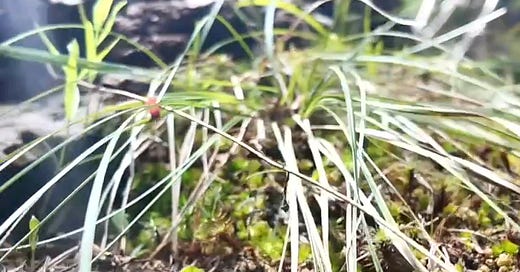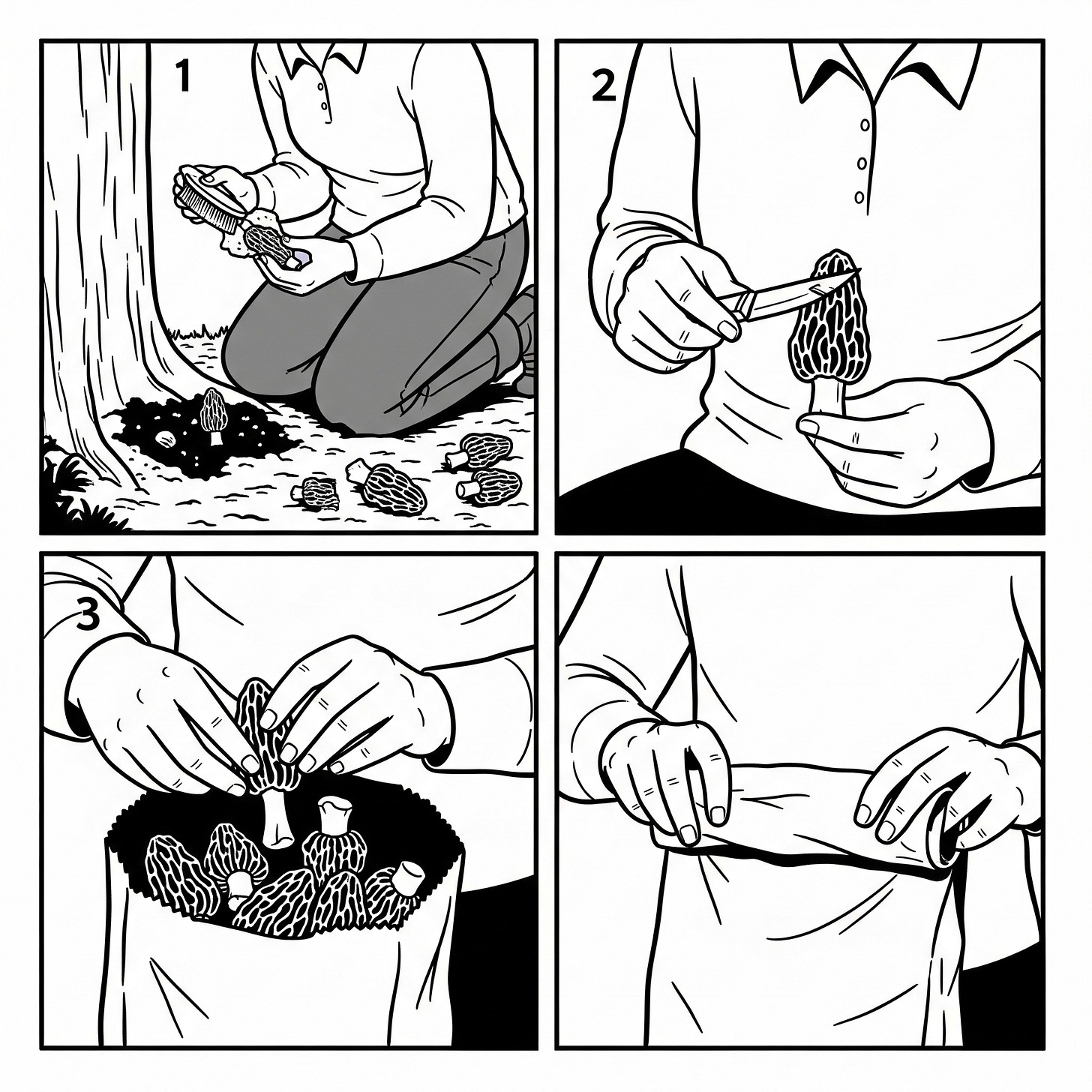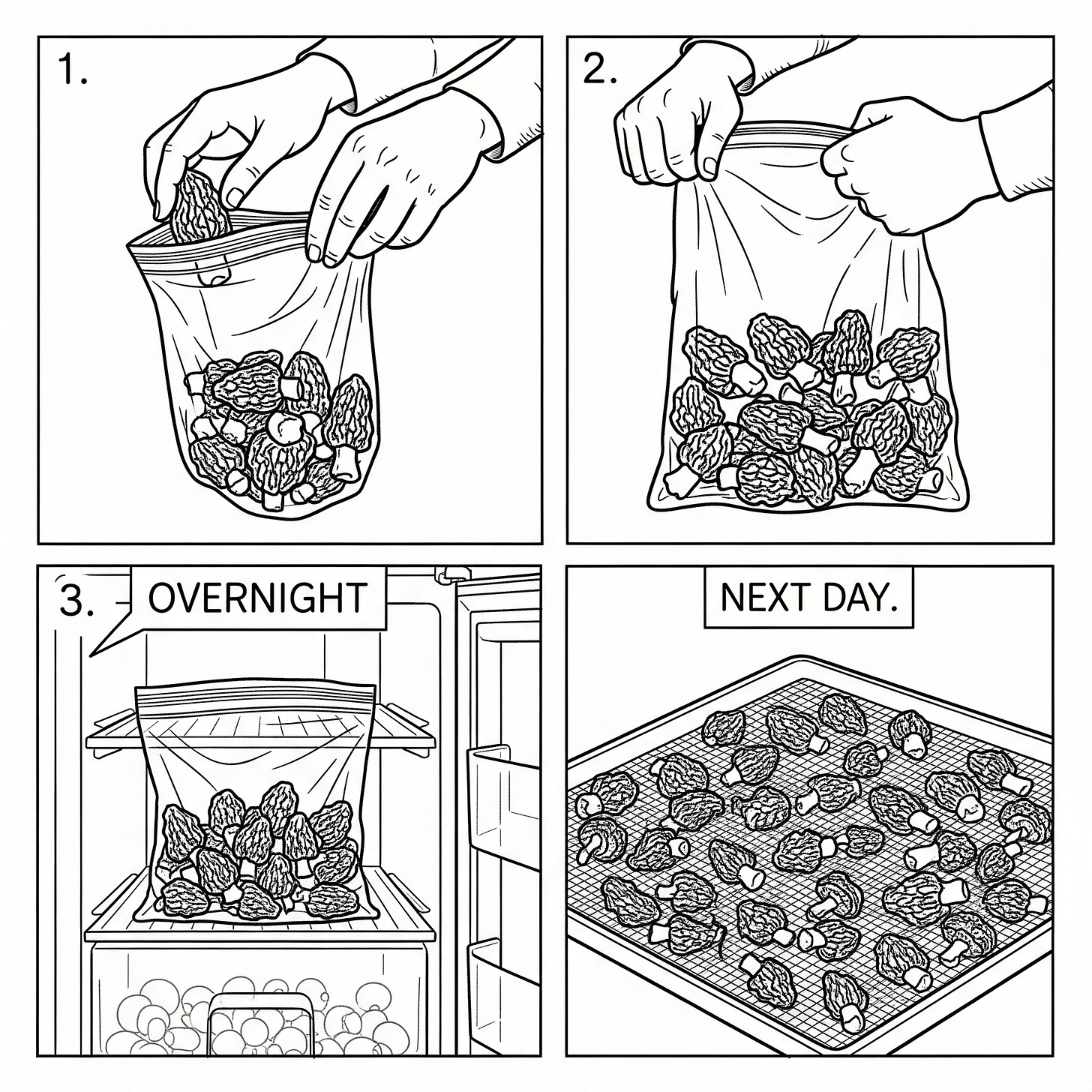Foraging for morel mushrooms in the Pacific Northwest is one of the most rewarding ways to connect with nature and bring incredible seasonal flavor into your kitchen. But morels are delicate, easily damaged, and notorious for trapping dirt in their honeycomb-like creases. Let’s dive into a chef-approved approach for picking, storing, and cleaning morels effectively—and explore the different species you might find in the PNW, along with crucial safety tips.
Picking Morels: Work Smarter, Not Harder
The key to easy cleaning starts in the field. One of the biggest mistakes many foragers make is tossing dirt-caked morels into their baskets, only to find them rolling around, picking up even more debris and breaking apart. Here’s how to avoid that:
Pick Them Clean:
Before putting any morel in your bag, gently wipe off excess dirt or debris using your hands or a soft brush. These mushrooms are fragile, so take your time.Trim Thoughtfully:
Cut the stem just above the dirt line. This keeps the rest of your harvest clean and prevents dirt from transferring to other mushrooms in your collection.Paper Bags Instead of Baskets:
Rather than letting them roll around in a basket—which can cause breakage and more dirt to get into the creases—use lightly crumpled paper bags. Roll the top down as you walk to keep the mushrooms from shifting around too much.
Transporting Morels Home
Once you’ve finished foraging:
Plastic Bags and Air Control:
Transfer your cleaned morels into a plastic bag. Gently squeeze out most of the air before sealing it. This keeps them from rolling around and protects them from breakage during transport.Managing Bugs:
This step also suffocates any small bugs that might be hiding inside. If left unchecked, these bugs will continue to eat and multiply, potentially infesting morels that were previously clean.
At Home: Cleaning and Storage
Overnight Refrigeration:
Store the bagged morels in the refrigerator overnight. This helps drive out any remaining bugs, ensuring they’re not hiding inside the mushrooms.Drying Out:
After refrigeration, spread the morels out on a sheet tray or a wire rack in the fridge for several hours—or even up to a couple of days. This evaporates surface moisture, reducing the risk of mold or spoilage.Concentrated Umami:
As they dry, the moisture evaporates (which isn’t where the flavor is anyway), leaving the mushroom’s umami essence more concentrated. This also makes them behave like little sponges, absorbing broths, stocks, or oils more effectively. They sauté beautifully with a crisp outside and a tender inside.
Look-Alike Species: Foraging Safely
The Pacific Northwest is home to several edible morel species:
Morchella americana (Yellow Morel): Classic honeycomb cap, typically found near hardwoods.
Morchella importuna (Landscape Morel): Darker cap, commonly found in urban settings like gardens or woodchip beds.
Morchella tomentosa (Fuzzy Foot or Fire Morel): Dark gray to black with a fuzzy texture, often grows in post-fire areas.
Morchella snyderi: Conical, found under conifers such as Douglas fir.
Morchella tridentina (Mountain Blond Morel): Pale cap, often found in higher elevations under conifers.
However, there are dangerous look-alikes to be aware of:
False Morels (Gyromitra species): These mushrooms often have irregular, lobed, or wrinkled caps and can be highly toxic. They may contain gyromitrin, which can be fatal.
Verpa bohemica (Early Morel): This species has a cap that hangs free from the stem rather than being attached. While some people eat them, they can cause gastrointestinal distress in some individuals and are best avoided unless properly prepared.
Important Safety Tips
Always Go with a Professional:
If you’re not 100% confident in your identification skills, always forage with an experienced guide or mushroom expert. Some edible species look remarkably similar to toxic ones, and mistakes can be dangerous.Always Cook Your Morels:
Never eat morels raw. They can cause digestive upset or worse. Proper cooking not only brings out their flavor but also ensures they’re safe to eat.
Final Thoughts
By picking morels clean in the field, transporting them carefully, and following a smart cleaning and drying process at home, you’ll preserve their quality and avoid hours of tedious scrubbing. Work smarter, not harder—and always prioritize safety over risk. Happy foraging!










Share this post